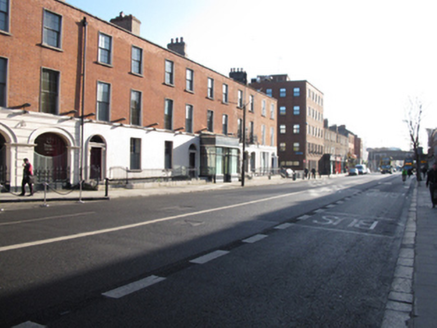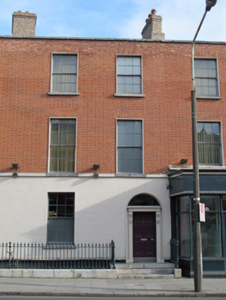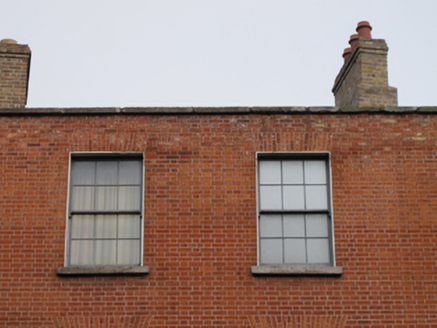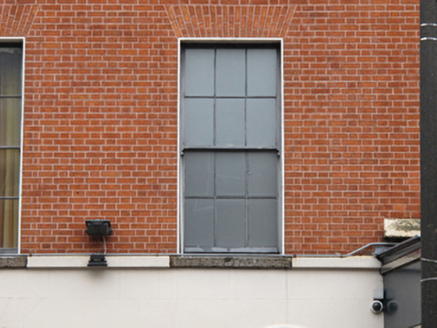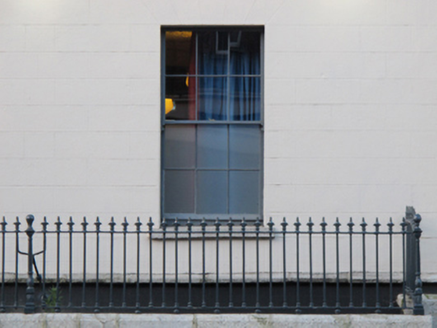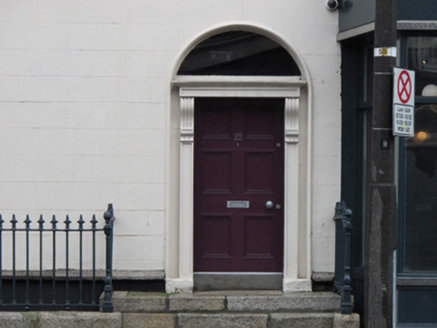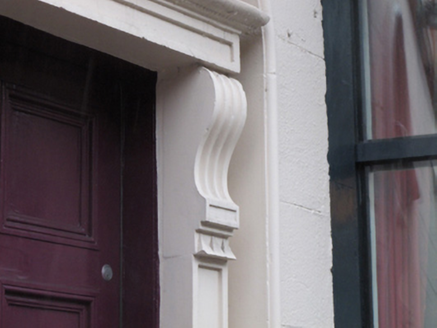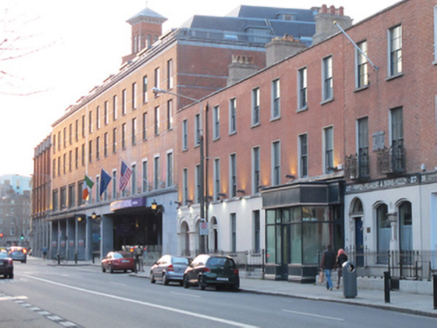Survey Data
Reg No
50020324
Rating
Regional
Categories of Special Interest
Architectural, Social
Original Use
House
Historical Use
Office
In Use As
Hotel
Date
1815 - 1820
Coordinates
316356, 234162
Date Recorded
11/03/2015
Date Updated
--/--/--
Description
Terraced two-bay three-storey over basement former house, built 1818, now part of hotel. Shared M-profile pitched slate roof hidden behind rebuilt red brick parapet with granite coping, shared brown brick chimneystack having clay pots. Red brick, laid in Flemish bond, to upper wall to front (south) elevation, render platband over lined-and-ruled render to ground floor and basement area, carved granite plinth course. Square-headed window openings throughout with raised render reveals, granite sills, replacement six-over-six pane timber sliding sash windows. Wrought-iron bars to window to basement. Round-headed door opening having moulded masonry surround, masonry doorcase comprising panel moulded entablature with cornice surmounted by plain fanlight, panelled pilasters having fluted consoles, timber panelled door, granite platform and steps flanked by wrought-iron railings with cast-iron corner posts and finials on carved granite plinth wall, returning to enclose basement area. Located towards west end and north side of Pearse Street.
Appraisal
Pearse Street, formerly Great Brunswick Street, was laid out by the Wide Street Commission in the early nineteenth century. This house is one of a terrace of four with shared form, fabric and detailing, built along the north side of the street. These buildings formerly served as offices for solicitors, a hotel, British Army recruitment headquarters, and a sub-post office amongst other uses, testifying to the versatility of these buildings and the eclectic mix of businesses located on Pearse Street. Although it has lost some original internal fabric, it retains its form and character. The stuccoed ground floor and granite detailing add subtle decorative interest, providing a textural contrast to the red brick. The railings to the front attest to the skill and artisanship involved in the manufacture of mass-produced ironwork, contributing to the overall heritage value of the composition.
